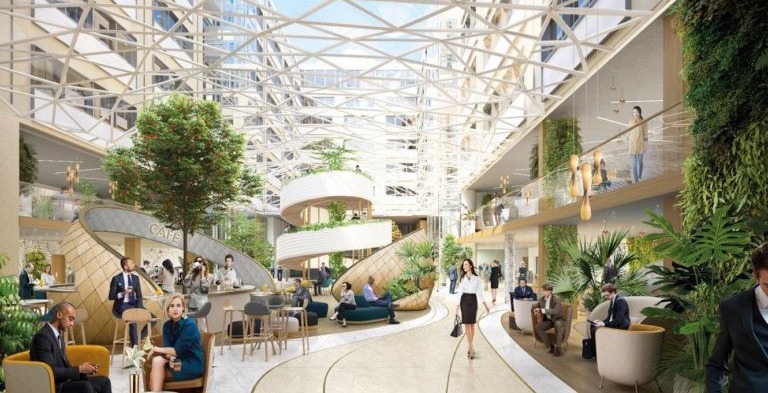1000 Solutions - July 25, 2019
BHEP, reducing costs and environmental impacts of buildings


Written by Tristan Lebleu 3 min read
A new generation of buildings designed to create financial, human and societal value.
While residential buildings are mostly full during the evening and night, commercial buildings and offices are occupied during the day. This is why occupancy rates of buildings are rarely above 40%, and energy and resources are partly wasted. Mutualizing the usage of buildings for both residential and commercial purposes could improve their costs and environmental impact. But if a building is to be able to change function at any time, it must be designed to do so firsthand.
This is why French construction company Bouygues has developed the BHEP concept, the Hybrid Positive Economy Building. This new concept aims to make buildings fully hybrid, combining self-production of the flows they need in order to operate with the possibility of constantly adapting the layout to maximise their utilisation rate, turning them into profit centres, rather than cost centres.
The BHEP model is first and foremost about optimizing the use of space thanks to the building’s modularity and connectivity. In such buildings, data is collected by sensors so that layouts can be reconfigured in real time.
The use of resources is also at the heart of this new model. The buildings integrate technologies to recover rainwater and wastewater, and uses facades and roofs to produce energy or grow food. Thus, these sustainable buildings are capable of meeting their own needs for water, energy and heat. Through smart grid systems, it can even exchange and store energy production across several structures.
The BHEP model is also perfectly in line with circular economy principles. By giving materials a “circular passport”, with their composition, location, state and possible future usage, they can be recovered, resold or reused when the building is reconfigured or deconstructed. The BHEP building therefore becomes a kind of “bank” of materials.
While BHEP has a positive environmental and economic impact, it also has an effect on its occupants’ health. Buildings are designed to help users stay healthy and in good shape through air quality analysis, consideration given to body cycles, and working spaces are organised according to the type of work to be done.
Sways, located in Issy-les-Moulineaux, just outside of Paris, is the first building fully renovated according to the BHEP model and should be operational in 2021.
"The real break is a change in behavior and business model" said Fabrice Bonnifet in an interview with La Tribune about the BHEP model. This combination of positive environmental and economic impact has made it a perfect example of a Solar Impulse Efficient Solution.

Written by Tristan Lebleu on July 25, 2019
